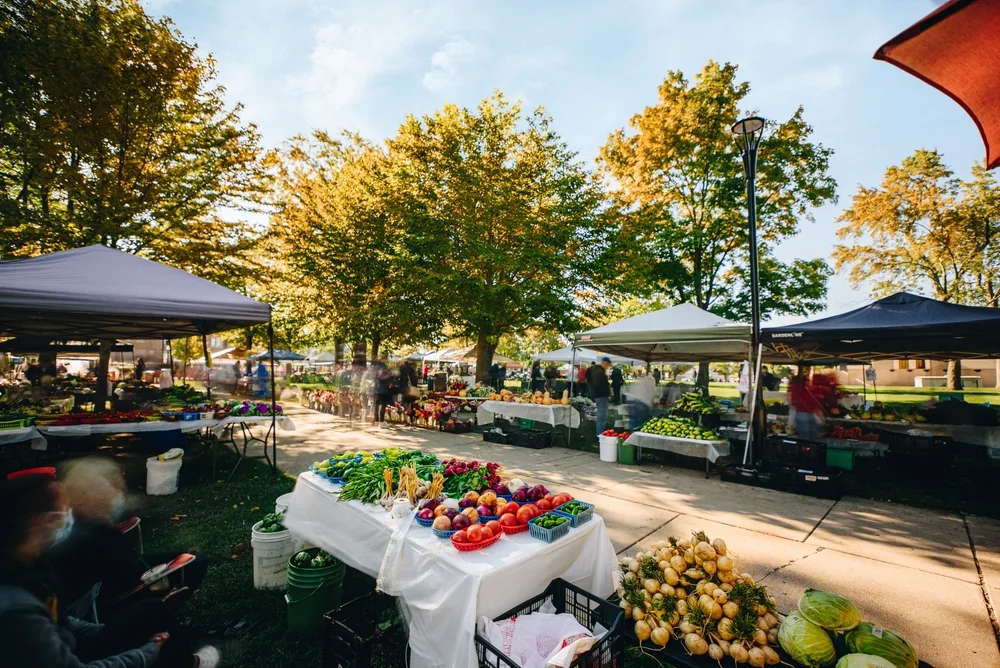The Senior Farmer’s Market Nutrition Program (SFMNP) is a program that provides low-income senior citizens with coupons that are to be exchanged for certain foods at farmers’ markets, roadside stands, and/or community supported agriculture (CSA) programs. SFMNP eligibility is determined by federal standards as well as state government agencies, including state Departments of Agriculture and local Agency on Aging institutions. The administration of the SFMNP program is performed at the state level. Learn more about how to apply for SFMNP benefits by reviewing the sections below.
What are the benefits of SFMNP?
Seniors who are eligible for the Senior Farmer’s Market Nutrition Program (SFMNP) receive check booklets filled with coupons that can be used to purchase eligible foods. The following items can be purchased with SFMNP benefits: fruits, vegetables, fresh-cut herbs and honey. There are items that cannot be purchased with SFMNP coupons, and they include dried fruits or vegetables, potted fruit, vegetable or herb plants, wild rice, nuts, maple syrup, cider and molasses.
The Senior Farmer’s Market Nutrition Program was implemented in order to:
- 1. Provide seniors with access to fresh, unprocessed and nutritious fruits, vegetables, herbs and honey at no cost to them in order to promote healthy eating and healthy lifestyles.
- 2. Increase the number of people who consume agricultural goods and emphasize the importance of eating healthy food. This is done by helping domestic farmers’ markets, roadside stands and community supported agriculture programs to expand further into local communities.
- 3. Help in the development of additional farmers’ markets, roadside stands and community supported agriculture programs. This supports local farmers and provides more employment opportunities to the community.
What are the SFMNP requirements?
In most cases, eligibility for SFMNP begins when you are at least 60 years of age. However, there are SFMNP eligibility exceptions in some states that are extended to certain Native American applicants who are older than 55 years of age. In addition, the state could also allow certain applicants younger than 60 years of age who have disabilities to be eligible to receive the benefits as well. In order for a younger disabled applicant to receive SFMNP benefits, they must reside in a housing facility that is primarily occupied by senior individuals that are receiving services similar to SFMNP.
To be eligible for SFMNP, your household must not exceed the income maximum. This SFMNP benefits guideline is established annually based on the average expected cost of living during that given year. Income eligibility for SFMNP is the biggest factor that determines whether or not you could potentially receive benefits from the program, as this program is meant to assist only the low- and very-low income households and individuals who need assistance in purchasing food. To ascertain whether your household can qualify for SFMNP benefits based on your income, you will need to see if your household income falls below the very specific limits.
As long as the applicant meets the SFMNP age eligibility requirements, some states will simply accept proof of enrollment in other benefit programs for eligibility. These programs include the Commodity Supplemental Food Program (CSFP) or the Supplemental Nutrition Assistance Program (SNAP or commonly known as food stamps). In addition, certain states may establish a residency requirement for applicants. This could potentially mean that only applicants residing within a designated area in a particular state are eligible for senior SFMNP benefits. It is very important to understand what the eligibility guidelines are so that you can make an educated decision on whether to apply for the benefits based on how likely you are to be accepted. Find out all about the specific SFMNP income, residency and other requirements by downloading our comprehensive guide.
How to Apply for SFMNP Benefits
Generally, the SFMNP application process requires that you discover who your Senior Farmer’s Market Nutrition Program (SFMNP) state contact is, and then reach out to them either via telephone, email or mail. The SFMNP benefits application process can vary based on the state that you reside in and are seeking benefits from, so it is crucial that you learn more about your state-specific requirements before you are truly able to apply. Furthermore, it is important to note that not all states in the U.S. participate in SFMNP. Just 42 U.S. states take part in the program. To discover more about SFMNP, download our guide here.
